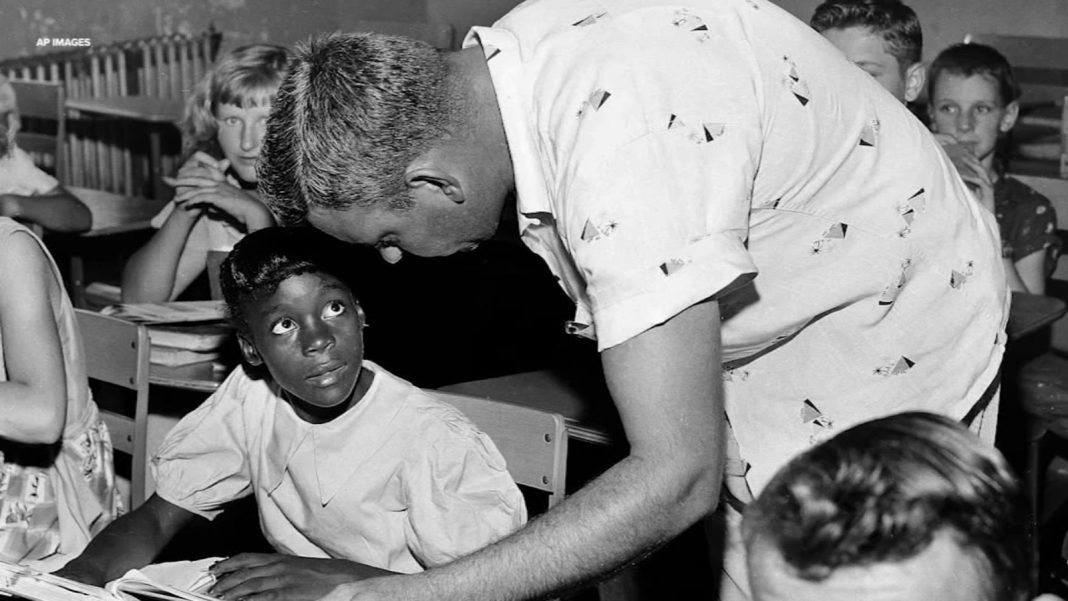70 Years After Brown v. Board of Education, Work Still Remains for Educational Equality
Introduction:
Friday marked the 70th anniversary of Brown v. Board of Education, the landmark U.S. Supreme Court ruling that ended racial segregation in public schools. While this decision transformed the education system, historians and educators emphasize that there is still much work to be done.
The Reality of Segregation:
Pearline Perkins, who recently celebrated her 90th birthday, vividly recalls her experience as a student in all-Black schools in East Texas during the 1930s and 1940s. She explains how everything was segregated – from bathrooms to classrooms, and even textbooks. These institutions aimed to suppress Black students and instill a sense of inferiority within them.
The Origins of Segregation:
To understand why racial segregation occurred, we must go back to the Reconstruction Era after the Civil War. Resistance to the abolishment of slavery led to the implementation of Jim Crow laws. In 1896, the Supreme Court’s ruling in Plessy v. Ferguson upheld these laws, stating that segregation was constitutional as long as facilities were “separate but equal.”
Inequality in Education:
Dr. Matthew Washington, a history professor at Prairie View A&M University, explains that public schools were far from equal for Black students during this time. African American students faced underfunded facilities, limited transportation options, insufficient school supplies, and a lack of financial support compared to their white counterparts.
Firsthand Experience of Inequality:
Perkins not only experienced this inequality as a student but also as an educator. After moving to the Greater Houston area in the 1950s, she witnessed white parents objecting to their children attending school with Black students. When Black students excelled academically, Black teachers were accused of cheating on test scores. The district constantly tested and retested, adding to the challenges faced by Black educators.
The NAACP’s Legal Battle:
Simultaneously, the NAACP filed several lawsuits challenging segregation in public schools, ultimately leading to the landmark Brown v. Board of Education case. This legal battle was sparked by Linda Brown’s denial of admission to an all-white school near her home in Topeka, Kansas. Instead, she had to endure a dangerous commute to an all-Black school.
The Urgency for Integration:
At the time, many civil rights activists argued against the concept of gradualism, which proposed a slow integration process. Activists believed that immediate integration was necessary after nearly a century since the end of slavery. The Supreme Court heeded this call by ruling unanimously on May 17, 1954, that racial segregation in public schools was unconstitutional.
Resistance to Integration:
Despite the Supreme Court ruling, resistance to integration persisted, particularly in the South. Even the Houston Independent School District took 30 years to officially desegregate. Historians refer to this resistance as “massive resistance,” with politicians and local organizations like the White Citizens Council actively hindering integration efforts.
Reflections on Progress:
As the 70th anniversary of Brown v. Board of Education is commemorated, Perkins expresses gratitude for the progress made in achieving equality and equity for students of all backgrounds. However, she emphasizes that there is still more work to be done. Perkins firmly believes that no child should be left behind, and that unity is crucial in creating a better America for everyone.
Conclusion:
The legacy of Brown v. Board of Education serves as a reminder of the progress made toward educational equality. However, it also highlights the ongoing challenges that persist in achieving true equity in our education system. The fight for equal opportunities for all students continues, urging us to work together towards a brighter future.
